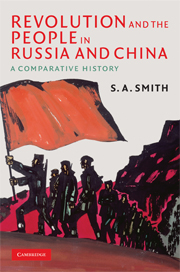Book contents
- Frontmatter
- Contents
- Acknowledgments
- Introduction: Capitalist Modernity and Communist Revolution
- 1 Memories of Home: Native-place Identity in the City
- 2 The Awakening Self: Individuality and Class Consciousness
- 3 After Patriarchy: Gender Identities in the City
- 4 Saving the Nation: National and Class Identities in the City
- 5 Workers and Communist Revolution
- Index
- References
1 - Memories of Home: Native-place Identity in the City
Published online by Cambridge University Press: 05 June 2012
- Frontmatter
- Contents
- Acknowledgments
- Introduction: Capitalist Modernity and Communist Revolution
- 1 Memories of Home: Native-place Identity in the City
- 2 The Awakening Self: Individuality and Class Consciousness
- 3 After Patriarchy: Gender Identities in the City
- 4 Saving the Nation: National and Class Identities in the City
- 5 Workers and Communist Revolution
- Index
- References
Summary
It is rare for a peasant to remain a peasant and be able to move. He has no choice of locality. His place was given at the very moment of his conception. And so if he considers his village the centre of the world, it is not so much a question of parochialism as a phenomenological truth. His world has a centre (mine has not).
John BergerFor the anthropologist James Clifford, the meaning of modernity is constituted by the experience of displacement and discontinuity. For those peasants who migrated to St Petersburg and Shanghai the move away from the villages of their birth, hitherto the centre of their world, and arrival in the city forced them to reflect upon what it meant to be a peasant. Exposure to metropolitan modernity called into question migrants' identities as peasants, yet the experience of relocation to the city was mediated by social networks that peasants brought with them from the village. In both Russia and China, ties of kinship and native place were used by migrants to ease their interaction with strangers: they looked to fellow countrymen to help them find work and accommodation, and a paradoxical result was that, at least for first-generation immigrants, native-place identifications sharpened in the context of urban-industrial life. This chapter explores the nature of workers' identifications with the villages of their birth, the uses they made of native-place networks in negotiating the uncertainties of urban-industrial life, the discourses of town and countryside that helped make sense of the transition from one to the other, and the ways in which native-place sentiment was transfigured in the ferment of revolution.
- Type
- Chapter
- Information
- Revolution and the People in Russia and ChinaA Comparative History, pp. 37 - 68Publisher: Cambridge University PressPrint publication year: 2008



